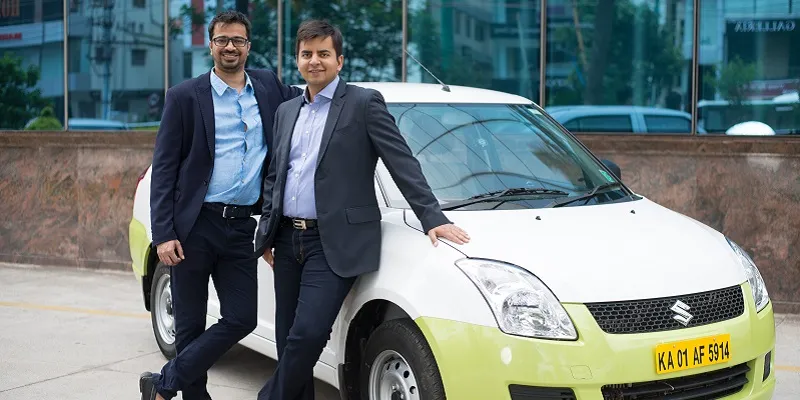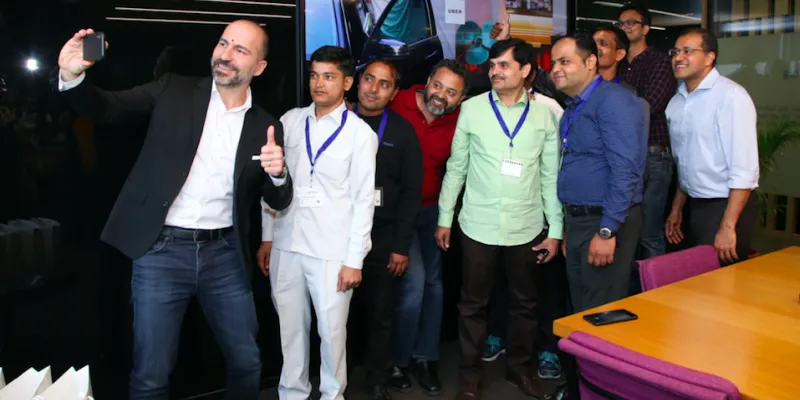Is localisation turning out to be Uber’s biggest bane in Asia?
Uber is facing trouble in one of the world’s largest markets - Asia, which, by 2022, is believed to touch over 494.3 million users. After China and Russia, Uber has conceded a defeat of sorts in Southeast Asia, selling its ride-hailing business in Southeast Asia to Indonesian rival Grab.
While the tech world has seen its fair share of battles over the years, few have been as bruising as those of global ride-sharing companies. Uber, since its conceptualisation, has been warding off competition across the world from rivals built on similar concepts, more so in Asia.
Since its entry into the continent in 2013, Uber has charged on with its strong global play and deep pockets. Its Asian rivals, at the same time, were also flexing their muscles, giving customers distinct experiences that demonstrated a high degree of localisation due to a deeper understanding of local cultures.
So, while India’s Ola offered bookings through the website and even a call centre in addition to the app, and accepted cash payments from the very beginning, Grab in Indonesia began with teaching driver partners how to use smartphones. The companies, to help driver partners adapt to the technology, also focused on local languages, voice-based commands and increased gamification.

In fact, for many consumers, Ola or Grab was the first mobility app they downloaded.
Uber, came with strong technology backing, and doesn’t even have a call centre in Asia. Most Asian users are not comfortable with chat or talking to a bot, and prefer a conversation with a person, which for many was a sore point when it came to Uber.
“Uber is brilliant, but the problem is, if something goes wrong, there are these endless chats and emails we need to go through. There is no single point contact or call centre,” says a 34-year old marketing executive.
It also initially did not accept cash payments, and took all of two years after starting operations in Asia to accept cash payments.
That Indians like to be spoilt for choice is no secret, and this was another scoring point for Ola. The Bengaluru-based cab aggregator offers multiple categories - Share, Micro, Mini, Prime, Prime Play, Auto, Lux, Rentals, Outstations, Electric Vehicles in Nagpur, and Pedal in IIT Kharagpur. Uber, on the other hand, has four offerings – Pool, Go, Premier and Auto. It only recently added Hire in response to Ola’s Rentals. However, these initiatives seem too less too late, as they are years behind Ola which cashed in on the first mover advantage.
For Ola, the idea was to be present in every form of commute that the Indian customer wanted, and Uber is now just about starting to add more categories.
In the Middle East too, Uber is facing strong competition from local company Careem. While the market is relatively small, Careem is focusing on addressing regional challenges like cultural attitudes, and women taking transit alone. It has a strong emphasis on driver behaviour and interaction with passengers and sharing real-time cab location details.
Taking on the Asian Tigers
When Uber entered India in 2014, rival Ola was valued at $3 billion, and commanded a majority market share. It still does. In Indonesia, Grab scripted a similar story. It was valued at $3 billion in 2014, and is twice that at $6 billion now. When it entered Asia through Taipei, Taiwan, in 2013, Uber was valued at $3.5 billion, and had raised $258 million Series C funding. Ola is currently valued at $7 billion and Uber’s valuation stands at a whopping $68 billion and it has raised close to $22 billion in funding.
The huge valuation jump, and deep pockets, however, have not helped Uber in the long run as it sold its China operations to Didi Chuxing, Indonesia operations to Grab, and is a distant second to Ola in India.
Ride sharing in Asia - especially India, China and Southeast Asia is a big market – the revenue from the segment in the first three months of this year alone stands at $32,062 million, and is expected to touch $63,000 million by 2022, according to a report by Statistica.
What makes Asia a tough market? Was it a first mover advantage for Grab, Didi and Ola, or is the cultural and local edge that Uber lacks.
At face value, ride sharing seems simple. Download the app, drivers and riders are matched, and a ride is completed. However, Asia works differently, and many nuances are added to the ‘simplicity’ of ride-sharing.
One size doesn’t fit all
When Uber launched in the US, the idea was that of a peer-to-peer ride hailing app in a market that already had a significant smartphone penetration. Uber focused on a global vision and global solution, a strategy that, in hindsight, has not worked very well for it.
“It is no longer sustainable to have a global strategy. The lines are blurring faster than we know. Technology alone is no longer an advantage. If you take Uber’s competition in India, Ola for example, they have localised completely. The idea is more about how do you get the end consumer to find you easier and friendlier,” says Anuj Jain, Co-founder, Startup-O, a Singapore-based early stage fund.
Now, local players are upping the competition and looking at global markets. Ola recently launched operations in Australia, an Uber stronghold, while Didi has started a driverless car centre in San Francisco.

Will Uber consolidate all of its Asia businesses
The sale of its Indonesia operations to Grab is Uber’s third retreat globally, and second in Asia, raising the question if this is its strategy. Uber CEO Dara Khosrowshahi, in his blog, denied this. What is interesting though is that the mixed blood in the cab aggregation market is getting thicker.
Uber sold its China business to Didi in a cash and stake deal, where in Uber acquired 17 percent stake in Didi. It also indirectly acquired stake in Ola as Didi is an investor in the Indian cab aggregator.
Uber holds 27.5 percent stake in Grab post its latest deal and Dara has joined its board of directors. Again, Grab also holds stake in Ola, giving a bigger holding in the latter to Uber. Also, Didi, Grab and Ola have Softbank as their primary investor, and the Japanese conglomerate early this year invested $10 billion in Uber.
“It is a deeper market capitalisation by Softbank. They essentially are ruling the global cab aggregation market. Also, when Uber roped in Softbank as an investor, the Japanese conglomerate urged Uber to focus on its existing markets instead of the ones in Asia,” says Anuj.
While the markets might look at a consolidation, Uber is gunning for a public offering next year. Dara confirmed the same during his recent visit to India. The latest deal with Grab will help Uber to turn some of the red in its ledger. “Dara is focused on bringing in profitability and return to the investors, and this move (the Grab deal) is a step in that direction,” says Anuj.

A longer drive towards M&A
Citing a Google Temasek report, David Gowdey, Managing Director, Jungle Ventures, says the online rides market is expected to grow five-fold by 2025, touching close to $13 billion or 15 percent of the total travel market. Of this, Indonesia is believed to be the largest. He says:
“This consolidation really results in more of a head-to-head battle between Go-Jek and Grab/Uber. It also is a strong proof point that M&A continues to be an increasing trend in SE Asia. One of the main drivers of M&A has been the local market operating complexity. We have seen many Chinese buyers enter SE Asia through an acquisition (like Alibaba did through its acquisition of Lazada), but this is the first big example of a local competitor taking over the regional operations of a global player.”
David believes that with the Uber-Grab deal, the M&A activity will only intensify, and be driven by either traditional businesses in the region looking to acquire new technology, large regional players looking to expand, or foreign players looking to enter the Southeast Asian market.
What does it mean for the consumer
While the consolidation efforts might make investors and companies happy, the end-consumer may face a different challenge. When Uber exited China, there were reports of consumers facing the brunt of a monopoly that was Didi.
Consumers so far have benefited from ride aggregators’ price battle but that will not last forever.
“The consumer is definitely going to suffer in the short term. But in long term, it also opens way to innovations of different kinds. Also, local governments work towards ensuring the balance is made by starting services of their own,” says Anuj.
Whether Uber will exit Asia or not is yet to be seen. However, what is for sure is that if the aggregator is seriously looking at Asia, it will have to move from its global strategy and go Glocal.







